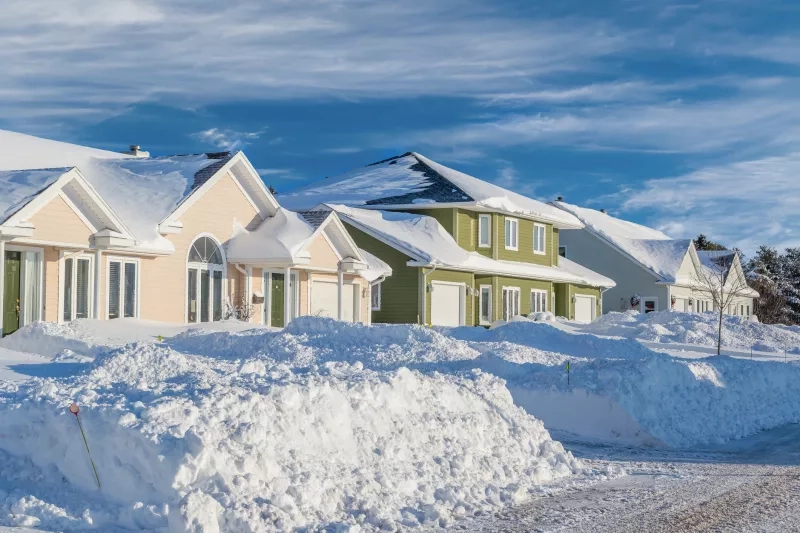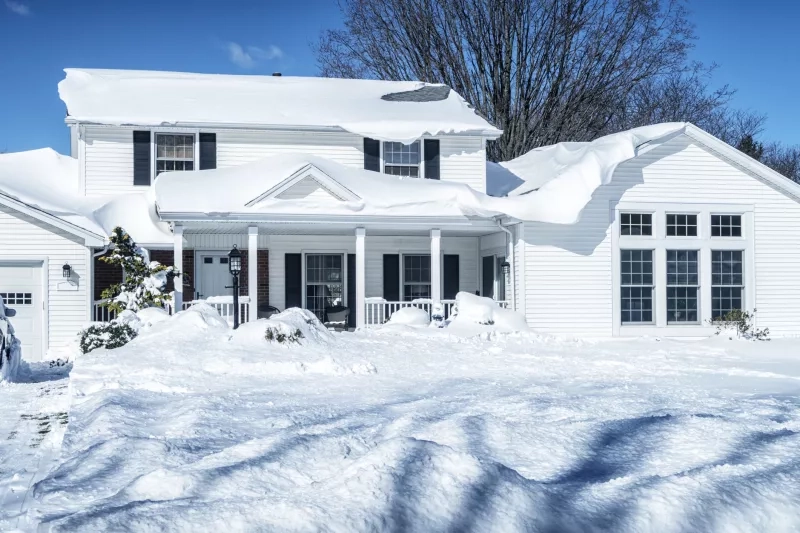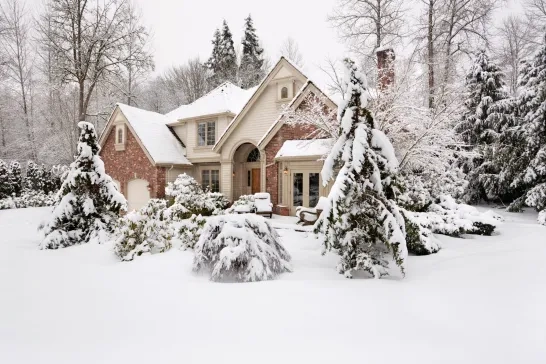
Canadian winter tips: How to protect your home from snow and ice
3 Minute Read
Winter in Canada can be a beautiful and magical time, but it also brings challenges for homeowners. Heavy snowfall and freezing temperatures can damage your house if you're unprepared.
In many parts of the country, temperatures can plummet far below freezing, occasionally dropping as low as -40°C during severe cold snaps. By taking proactive measures, homeowners can protect their properties from winter-related hazards and avoid the stress of managing damage caused by snow and ice.
Common winter challenges and how to prevent them

The Institute for Catastrophic Loss Reduction (ICLR) highlights three major winter weather risks that can impact homes.
Roof collapse
Excessive snow and ice can add significant weight to your roof, increasing the risk of structural strain and collapse. Wet, heavy snow and ice are hazardous, weighing more than light, fluffy snow. Regularly clearing snow off your roof can help prevent overloading and protect your home from severe damage. Use a roof rake or hire a professional to remove snow, avoiding standing directly below while working safely.
Proper attic insulation and ventilation also help prevent ice dams, which can trap water and further strain your roof. To address potential issues early, inspect your roof regularly for warning signs such as sagging, cracks, or unusual noises.
Ice dams
When ice accumulates along the edges of your roof, it can form ice dams, which block melting snow from draining properly. This trapped water can seep under shingles, causing leaks, water damage, and even structural issues. Ice dams typically occur when warm air from your attic melts snow on the roof, refreezing at the colder edges.
To prevent ice dams, ensure your gutters and downspouts are clear of debris to help water flow freely. Proper attic insulation and ventilation are critical to maintaining a consistent roof temperature and reducing snow melt.
Sealing attic air leaks can further minimize heat escape, helping to protect your home from the costly impacts of ice dams.
Frozen pipes
When water freezes in pipes, it can expand and cause the pipes to burst, resulting in costly flooding and damage. To protect your home against snow and ice, start by insulating exposed pipes and keeping indoor temperatures consistent. During extreme cold, allow faucets to drip slightly to relieve pressure in the pipes. Make sure to seal any gaps or cracks near pipes to block cold air, and open cabinet doors under sinks to let warm air circulate around the plumbing.
If you will be going away, set your thermostat to at least 12°C and consider shutting off and draining your water system to prevent freezing. These precautions can save you from costly repairs and water damage.
Proactive steps to protect your home
Taking simple steps now can protect your home and help you avoid winter problems. Here are some key preventative measures:
-
Add insulation to walls and attics: Keep your home warm and lower energy bills by improving heat retention.
-
Check roofs and gutters: Clear debris and inspect for damage to avoid leaks or ice dams.
-
Protect exposed pipes: Insulate to prevent freezing and bursting during extreme cold.
-
Seal windows and doors: Stop drafts and heat loss with proper sealing.
-
Service your heating system: Ensure your heating runs efficiently and reliably all winter.
-
Prepare backup power and heat sources: Be ready for outages with alternative heating and power solutions.
-
Plan for snow removal: Stock up on tools like snow rakes and de-icers, or hire licensed snow removal professionals for safe, efficient service.
Winter in Canada can be tough, but with a little planning, you can protect your home and keep things running smoothly. Taking small steps now will help you avoid damage, stay warm, and handle whatever winter throws your way.
This advice is intended to provide general information only and is not intended to provide legal or professional advice, or to be relied on in any dispute, claim, action, demand or proceeding. CAA Insurance Company or ICLR do not accept liability for any damage or injury resulting from reliance on this information.




